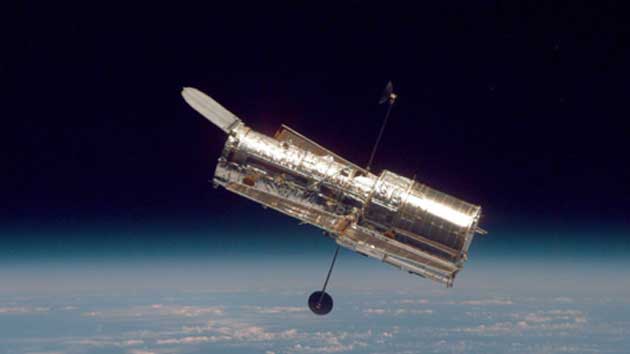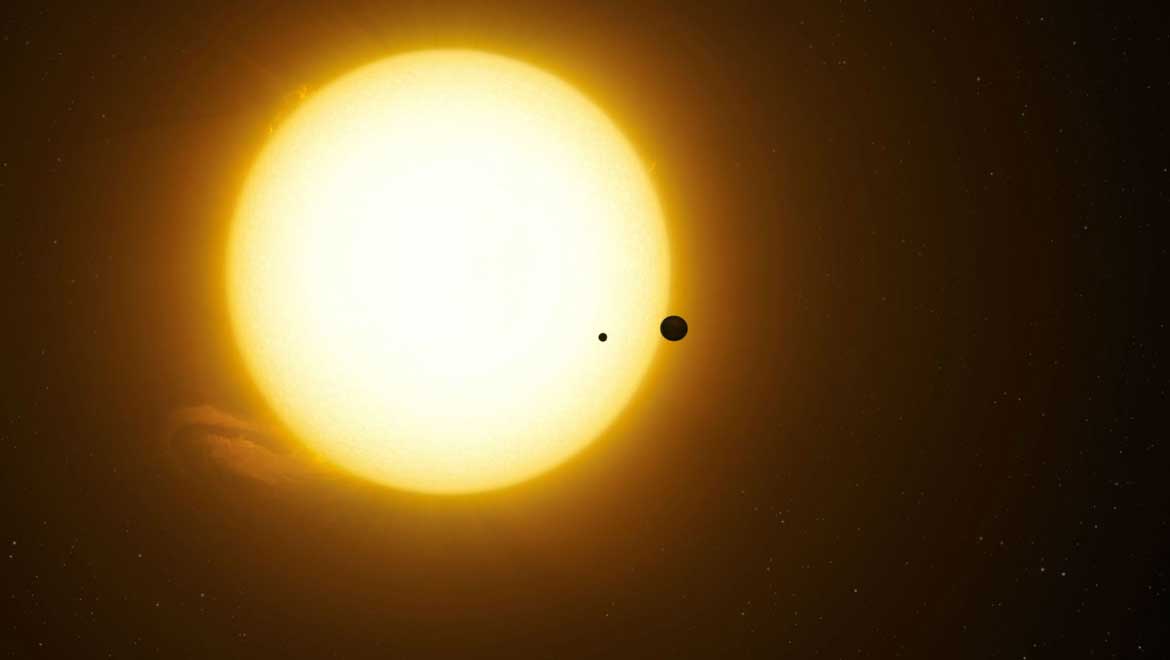The Earth’s moon was discovered in 1610, following which four of Jupiter’s moons were found orbiting the planet (it was only later that the remaining 12 moons were observed). These set of discoveries were further succeeded by the evidence of the five moons surrounding Saturn. It was in the nineteenth century that the moons of other planets such as Mars, Neptune and Uranus were found.
Some time ago, astronomers suspected signs of an “exomoon” orbiting the exoplanet, Kepler 1625b — with the help of data visualized from the Kepler spacecraft — which they dubbed “Neptmoon.” The team made these speculations from an earlier NASA mission that identified more than 5000 exoplanets. From there, the number was narrowed down to 284, contingent upon the size of the planet and the metrics that would make moons good hosts.
Until now, it was believed that exomoons or extrasolar moons that orbit exoplanets, were rare in their existence.
The two researchers — Alex Teachey and David Kipping — of the Columbia University, on analysis, suggested that the detection of dips of light ahead or behind the planet could indicate the presence of a moon. This is called the transit method. However, since these signals were inconsistent, a confirmation could not be made at that time. The team also suggested that such cosmic bodies were the best shot at harboring extraterrestrial life.
Speculated Exomoon Confirmed
A few hours ago (on October 3, 2018), the presence of the Neptune-sized exomoon, orbiting its exoplanet, which is approximately the size of Jupiter, located about 8,000 light years away, was established. This assumption was reached due to the 40 hours of observations recorded during the mission.
As per the paper, the exomoon hypothesis was based on two strong points — the TTVs (transit timing variations), and the signature after planetary transit, similar to that of a moon. In addition, the authors described that it was easy to detect and label a planet outside our solar system as an exoplanet because of its metronomic activity and movement. On the other hand, moons, in general, are not like clockwork and can be unpredictable due to the varying phases they undergo.
Then again, this exomoon is unlike anything previously-known, since it was reported to be made of gas, instead of rocks or ice. Regarding the nature of this object, Kipping said, “The closest analog would be picking up Neptune and putting it around Jupiter.”
The event was detected using the Hubble Space Telescope (HST), and the report has been published in a recent issue of Science Advances.

The Hubble Space Telescope, much more advanced than its predecessor, the Kepler telescope, was instrumental in finding a moon, the exomoon, orbiting an exoplanet. (Source: NASA/Handout)
Real or Not?
Despite making progress in this area, Kipping and Teachey asserted that these findings were not definitive and re-observation of the star is on the cards to verify the exomoon theory.
Noted astrophysicist at the Max Planck Institute for Solar System Research in Germany, René Heller, expressed his skepticism at the exomoon’s presence and said that more data needs to be analyzed and clearer observations required to be made before reaching any conclusions.
It is not surprising that there is such a reaction, among experts too, because of the unusual nature and size of the exomoon. Previous studies have shown that moons can only be formed in one of three ways — by planetary collision, by the build-up of gas and rock in the field of orbit or by the planet’s gravitational force — and none of these seem to explain the size of the moon. Heller added that if this exomoon was indeed present, it would have to be ten times bigger than all the moons and planets in the solar system combined, and that is, evidently, not the case.
Similarly, NASA’s Thomas Zurbuchen also mentioned his hesitation at this moon’s existence and urged rethinking before making any further statements.
Whether it will ultimately be proven to be real or not, this discovery could drive the need to explore other mysterious objects hidden in the cosmos, and, also someday, the possibility of habitability on planets and moons outside our solar system.
Top Image: Artist’s impression of exoplanet, Kepler 1625b, and the “exomoon” seen orbiting it.(Source: Dan Durda/Axios)







No comment